Daniel A. Rabuzzi's Blog, page 8
December 29, 2012
Enchanting Spaces, Part I: People (Or, The IKEA Catalog as Cousin to The Hobbit)

--Samuel van Hoogstraten, Perspective Box With Views of the Interior of Dutch House
c. 1655-'60 (The National Gallery, London)
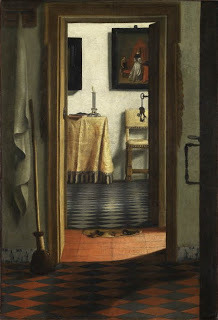
--van Hoogstraten, Les Paouffles, 1658 (The Louvre)
Who lives in this house? (I can smell the pannekoeken in the pan, butter browning, with cinnamon...)
Here Bachelard's "poetics of space" meets Tolkien's "elvish craft of Enchantment, the sub-creation of a Secondary World." Calvino's sixth principle, Visibility, merges with Benjamin's "panoramas, dioramas, cosmoramas...phantasmagorical and fantasmaparastatic experiences, picturesque journeys in a room."

--Ulla von Brandenburg, Mephisto/ Angel/ Krawatten, abgeschnitten, 2010 (installation at The Common Guild, Glasgow)
Who lives here? (Travelers from afar perhaps, with the heads of dolphins, who speak in hieroglyphics).

--- A Tony Duquette interior, mid-20th-century.
Who lives here? (A family of connoisseurs I think, with soft velvet paws and eyes that gleam like rubies).
Narnia entered through a wardrobe in a spare room. The endless battery of rooms and passages that constitutes Gormenghast, the world-castle. The rooms that mutate, move and cannot be accurately measured in Danielewski's House of Leaves (like Dr. Who's TARDIS, the interior is much larger than the exterior). Down a rabbit-hole Alice fell, one lined "with cupboards and bookshelves; here and there she saw maps and pictures hung upon pegs." A hobbit-hole ("and that means comfort"), with its "panelled walls, and floors tiled and carpeted, provided with polished chairs." The "miniature, perfect Palladian house...with its sweet, retiring melancholy grace" in Angela Carter's "The Courtship of Mr. Lyon."

---Anne Hardy, Cipher, 2007
Who lives here? (A retirement home for Arlecchino and other characters from the Commedia dell'Arte?)
Worlds described within four walls in the novels of Dickens, Proust, Henry James, and Edith Wharton (who made her name first with The Decoration of Houses, published in 1897). Proust again, on the hotel in Doncieres: "an assembly of rooms as real as a colony of people." The famous opening chapter of Balzac's Pere Goriot, describing in the most minute, sociological detail the situation and outfitting of the Maison Vauquer and its peculiar inhabitants ("Nothing can be more depressing than the sight of that sitting room. The furniture is covered with horse hair woven in alternate dull and glossy stripes. There is a round table in the middle, with a purplish-red marble top, on which there stands, by way of ornament, the inevitable white china tea-service, covered with a half-effaced gilt network.") The care with which Mann describes the house of the Buddenbrooks, with which Stefan Zweig recalls elements of architecture in his boyhood Vienna.
Each of us now elvish enchanters in our own small spaces, creating secondary worlds for ourselves. ("Domestic," with root to "home," filiated with "to build," allied with "domination.") The IKEA catalog as a cousin to The Hobbit; Pottery Barn, Crate & Barrel, Restoration Hardware... names of realms as potent and perilous as Faerie itself-- maybe these are the latest outposts, in fact, of Faerie on mortal terrain. Rizzoli and Abrams the names of conjurors akin to Gandalf.
The two images below are by Laurie Simmons, from her Black Series, 1978-'79.

 Daniel A. Rabuzzi is author of the fantasy novel "The Choir Boats," available from ChiZine Publications in September 2009.
Daniel A. Rabuzzi is author of the fantasy novel "The Choir Boats," available from ChiZine Publications in September 2009."The Choir Boats" explores issues of race, gender, sin, and salvation, and includes a mysterious letter, knuckledogs, carkodrillos, smilax root,
goat stew, and one very fierce golden cat.
(www.danielarabuzzi.com). Daniel blogs at Lobster & Canary about speculative fiction, poetry, history and the arts.
Published on December 29, 2012 06:27
December 23, 2012
Painting the Text: Memory's Architecture
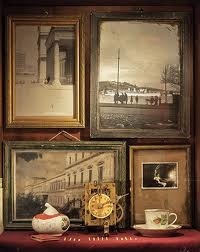
Orhan Pamuk realized a remarkable long-time dream in 2012 when he opened in Istanbul his Museum of Innocence-- the physical expression and repository of the story Pamuk tells in his 2009 novel of the same title.
A museum containing the artifacts described in the novel; a novel based on the objects that epitomize the lives of the characters; a house of fictional memories made real, the fictive as authentic as the reality; the Proustian desire come to life, a mansion of arcades on Sebaldian borderlands.
Pamuk, in an interview with Sameer Rahim, says: “When people read a novel 600 pages long, six months pass and all they will remember are five pages. They don’t remember the text – instead they remember the sensations the text gives them. In The Museum of Innocence, we are trying to give illustrations to those emotions. The layout of the museum is based on the chapters of the novel: the novel has 83 chapters so the museum has 83 display cabinets, and each box corresponds to the emotion of that chapter.”
Who can be surprised that Pamuk studied architecture and yearned to be a painter before becoming a writer of fiction?
(Click here and here for more).
Lobster & Canary wants to take up residence in a museum like this one. We want to build an annex of our own. We are apparently not alone in this: over the next week, we'll highlight other artists with similar visions. Down the rabbit-hole indeed!
Daniel A. Rabuzzi is author of the fantasy novel "The Choir Boats," available from ChiZine Publications in September 2009.
"The Choir Boats" explores issues of race, gender, sin, and salvation, and includes a mysterious letter, knuckledogs, carkodrillos, smilax root,
goat stew, and one very fierce golden cat.
(www.danielarabuzzi.com). Daniel blogs at Lobster & Canary about speculative fiction, poetry, history and the arts.
Published on December 23, 2012 10:33
December 16, 2012
Mervyn Peake, Mannerism, and The Morgan Library
Delighted to say that Garance Coggins references Lobster & Canary in "From Pictures to Prose: How Goya and Rembrandt Contributed to the Titus Books," published this fall in Peake Studies (click
here
). Coggins refers to L & C's July 29, 2012 entry, " 'Anything, Seen Without Prejudice, Is Enormous': Mervyn Peake, Caricature, and the Baroque Roots of Modern Fantasy Literature" (click
here
).
[Among many insights, Coggins quotes from chapter 14 of Gormenghast, a scene from Bellgrove's class: "The ink was blue, dark, musty, dirtyish, deep as cruel water at night: what were the other colours? Titus was surprised at the richness, the variety."]
Along similar lines, for more possible influences on Peake's work (or at least parallel imagery), I recommend a small but powerful exhibition currently at The Morgan Library & Museum in Manhattan: "Fantasy and Invention: Rosso Fiorentino and Sixteenth-Century Florentine Drawing" (click here ).
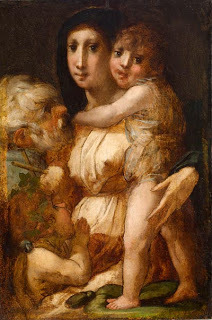
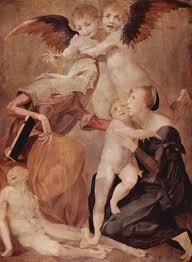

Daniel A. Rabuzzi is author of the fantasy novel "The Choir Boats," available from ChiZine Publications in September 2009.
"The Choir Boats" explores issues of race, gender, sin, and salvation, and includes a mysterious letter, knuckledogs, carkodrillos, smilax root,
goat stew, and one very fierce golden cat.
(www.danielarabuzzi.com). Daniel blogs at Lobster & Canary about speculative fiction, poetry, history and the arts.
[Among many insights, Coggins quotes from chapter 14 of Gormenghast, a scene from Bellgrove's class: "The ink was blue, dark, musty, dirtyish, deep as cruel water at night: what were the other colours? Titus was surprised at the richness, the variety."]
Along similar lines, for more possible influences on Peake's work (or at least parallel imagery), I recommend a small but powerful exhibition currently at The Morgan Library & Museum in Manhattan: "Fantasy and Invention: Rosso Fiorentino and Sixteenth-Century Florentine Drawing" (click here ).



Daniel A. Rabuzzi is author of the fantasy novel "The Choir Boats," available from ChiZine Publications in September 2009.
"The Choir Boats" explores issues of race, gender, sin, and salvation, and includes a mysterious letter, knuckledogs, carkodrillos, smilax root,
goat stew, and one very fierce golden cat.
(www.danielarabuzzi.com). Daniel blogs at Lobster & Canary about speculative fiction, poetry, history and the arts.
Published on December 16, 2012 01:36
December 9, 2012
Drop-Time in Hudson Square
Not long ago last week, I strode with purpose around Varick and Greenwich Streets when suddenly I entered the realm I call "Drop-Time": I was alone with multitudes for the long draft between one heartbeat and the next. (For my definition of "Drop-Time,"
click here
).
I am not sure from whence or how the punctuation sprang, what the trigger was. A woman glanced at me imperiously as she crossed the street, her thousand-dollar boots stamping the zebra, her scarf as well-combed as her hair. Two men muttered about advertising rates, three colleagues joked about something as they waited in line at the lunch-truck (which claimed to purvey the world's best grilled cheese sandwiches). Every storefront a tableau glimpsed, my reflection mingling with the workers inside at the chocolatier's, at the deli, at the bank-that-was-almost-like-a-living-room. A hundred sharply defined details, a nose here, an eyebrow there, a spoon poised in mid-air between a bowl and a mouth, words, words, words on every surface; the colors of red and teal, maroon, angular black, lots of brick and yellow. Strips of conversation slid through the air, combined, unknotted, added a coating of words to the muted roar of the trucks on the Holland Tunnel approaches.
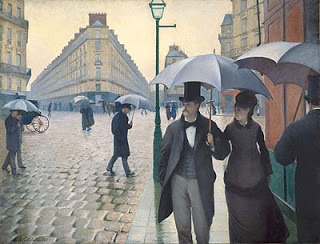
In Drop-Time, all those sensations slow into one enormous yet intimate moment, the enjambment between the worlds. I see everything and hear everything for that one instant, a great diastolic in-rush of sight and sound. Captured in the poetry of breathing, the flight of words above the reality of the people and places they describe. I taste the soup on the spoon, I know what is spoken at the truck of the grilled cheese sandwiches, I forgive the woman her arrogance.
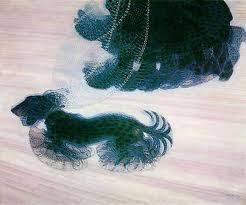
Sunbeams frozen on the sidewalks. Down the side-streets, a diminishing perspective that ends in grey warehouses along the Hudson. Straitened vision that leads to Gjallar's Bridge with its dim pallor, and the prospect of a ferry across the river towards sunset.
My gaze returns to the world in front of me, the throngs along Varick. I float for one second with a squadron of pigeons, see all of us below as motes among the buildings.
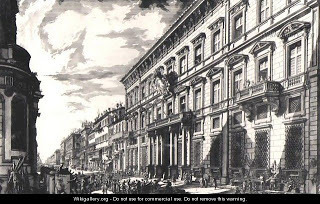
A taxi-driver hits his horn, the light shifts to green, someone yells something into a cell-phone...*blink, blunk*...I am just again inside myself, one among the many, a hyphen nearing my destination.
Carrying within me though the memory and future promise of Drop-Time.
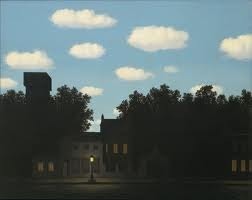
Daniel A. Rabuzzi is author of the fantasy novel "The Choir Boats," available from ChiZine Publications in September 2009.
"The Choir Boats" explores issues of race, gender, sin, and salvation, and includes a mysterious letter, knuckledogs, carkodrillos, smilax root,
goat stew, and one very fierce golden cat.
(www.danielarabuzzi.com). Daniel blogs at Lobster & Canary about speculative fiction, poetry, history and the arts.
I am not sure from whence or how the punctuation sprang, what the trigger was. A woman glanced at me imperiously as she crossed the street, her thousand-dollar boots stamping the zebra, her scarf as well-combed as her hair. Two men muttered about advertising rates, three colleagues joked about something as they waited in line at the lunch-truck (which claimed to purvey the world's best grilled cheese sandwiches). Every storefront a tableau glimpsed, my reflection mingling with the workers inside at the chocolatier's, at the deli, at the bank-that-was-almost-like-a-living-room. A hundred sharply defined details, a nose here, an eyebrow there, a spoon poised in mid-air between a bowl and a mouth, words, words, words on every surface; the colors of red and teal, maroon, angular black, lots of brick and yellow. Strips of conversation slid through the air, combined, unknotted, added a coating of words to the muted roar of the trucks on the Holland Tunnel approaches.

In Drop-Time, all those sensations slow into one enormous yet intimate moment, the enjambment between the worlds. I see everything and hear everything for that one instant, a great diastolic in-rush of sight and sound. Captured in the poetry of breathing, the flight of words above the reality of the people and places they describe. I taste the soup on the spoon, I know what is spoken at the truck of the grilled cheese sandwiches, I forgive the woman her arrogance.

Sunbeams frozen on the sidewalks. Down the side-streets, a diminishing perspective that ends in grey warehouses along the Hudson. Straitened vision that leads to Gjallar's Bridge with its dim pallor, and the prospect of a ferry across the river towards sunset.
My gaze returns to the world in front of me, the throngs along Varick. I float for one second with a squadron of pigeons, see all of us below as motes among the buildings.

A taxi-driver hits his horn, the light shifts to green, someone yells something into a cell-phone...*blink, blunk*...I am just again inside myself, one among the many, a hyphen nearing my destination.
Carrying within me though the memory and future promise of Drop-Time.

Daniel A. Rabuzzi is author of the fantasy novel "The Choir Boats," available from ChiZine Publications in September 2009.
"The Choir Boats" explores issues of race, gender, sin, and salvation, and includes a mysterious letter, knuckledogs, carkodrillos, smilax root,
goat stew, and one very fierce golden cat.
(www.danielarabuzzi.com). Daniel blogs at Lobster & Canary about speculative fiction, poetry, history and the arts.
Published on December 09, 2012 05:02
November 23, 2012
"Then She Fell" (Third Rail Projects)-- Sharing Dreams In A House Big As Memory

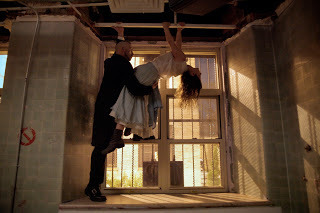
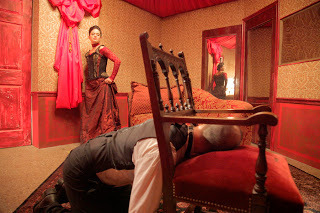 Then She Fell literally brings the audience into its spell, involving us not merely as spectators but as participants in a fever-dream meditation on Lewis Carroll, his relationship with Alice, and the nature of Alice herself. Created and produced by NYC-based troupe Third Rail Projects, Then She Fell entrances, mystifies, surprises, and delights with its immersive, multimedia approach. Lobster & Canary went through the looking glass a week ago, and recommends the experience.
Then She Fell literally brings the audience into its spell, involving us not merely as spectators but as participants in a fever-dream meditation on Lewis Carroll, his relationship with Alice, and the nature of Alice herself. Created and produced by NYC-based troupe Third Rail Projects, Then She Fell entrances, mystifies, surprises, and delights with its immersive, multimedia approach. Lobster & Canary went through the looking glass a week ago, and recommends the experience. As Third Rail puts it on a poem they handed out at the end of the two-hour journey (presumably written by a member of the company, as I could not find it otherwise cited anywhere): "I dreamt that we were dreaming a dream together you and I, and we were trapped in a house, big as memory. Countless doors."
That house, with its many doors (only to be opened upon instruction or command!), was the artfully laid out basement of the former Greenpoint Hospital in Brooklyn-- the perfect setting for an exploration of Wonderland. Third Rail takes great pains in its settings, from the flocked floral-pattern wallpaper to the period-perfect handwriting on the patients' records. For two hours, we were not only in Victorian England, we were actually inside Carroll's world; time outside stopped, inside prismatically fragmented. Transported utterly by the White Rabbit's timepiece.
While inviting comparison to Punchdrunk's Sleep No More (reviewed by Lobster & Canary on May 1st, 2011-- click here ), Then She Fell forges its own innovative way. Most fundamentally, Then She Fell only brings in 15 audience members per show, and then weaves those members into the show--or, rather, shows, since there are multiple "plot-lines," and no two audience members experience quite the same thing. We were constantly being split up and re-assembled in the warren of rooms, corridors and other hard-to-define spaces.
Trading nonsensical quips and riddles with the Mad Hatter...ruminating over bits of Carroll's verse, retrieved from a locked box while sitting alone in a tiny room festooned with roses hung upside down...drinking the strangest elixir, offered by one of the two Alices...who then danced with Carroll, after watching herself (the other Alice) in a non-existent mirror...drinking a toast and playing a game with Carroll himself...listening at very close hand to the mournful questions of the Red Queen, spent after her raging, alone at her dressing table...drinking tea at a certain famous party, that got faster and more furious as the gathered actors and guests passed the tea cups...fragments, illusions, hybrid creatures in huge framed pictures, the chilling organization of the hospital trays with their stoppered bottles and large needles, a gramophone that played "The Walrus and the Carpenter" while we surveyed the curious contents of solanders, a hundred aged photographs of Alice, keys, keys and locks...
We've been fans of Third Rail since seeing their Drifting Encyclopedia at the World Financial Center (Battery Park, NYC) in 2010, with its "assemblage of American oddities, scientific & historical ephemera, questionable accounts and implausible representations thereof," and most especially since wandering through their Steampunk Haunted House at the Abrons Art Center (Lower East Side, NYC) in 2011. We hope that, with Then She Fell, Third Rail gains an even wider audience. If you are in NYC, go see Then She Fell...and if you are not, call and ask Third Rail to come to wherever you are.
For more on Then She Fell, click here.
For more on Third Rail Projects, click here .
Banner and photos above are copyright Third Rail Projects (used here from their website, for non-commercial purposes). Pictured are: Rebekah Morin as the Red Queen and Tom Pearson as the White Rabbit, Alberto Denis as Lewis Carroll and Marissa Nielsen-Pincus as one of the two Alices. Daniel A. Rabuzzi is author of the fantasy novel "The Choir Boats," available from ChiZine Publications in September 2009.
"The Choir Boats" explores issues of race, gender, sin, and salvation, and includes a mysterious letter, knuckledogs, carkodrillos, smilax root,
goat stew, and one very fierce golden cat.
(www.danielarabuzzi.com). Daniel blogs at Lobster & Canary about speculative fiction, poetry, history and the arts.
Published on November 23, 2012 11:26
October 28, 2012
The Interstitial Arts Foundation Salon

The Interstitial Arts Foundation held its monthly NYC salon last week, organized and curated by K. Tempest Bradford, and hosted by The Vagabond Cafe in the Village. Lobster & Canary has happily participated in the salon on other occasions, and was sorry that conflicting commitments kept me from attending this time. But we had a scout there-- my wife, the artist Deborah Mills, who sends us this report:
"Fabulous conversations with fascinating people, with friends and newcomers alike...truly multifaceted and interdisciplinary (interstitial!) across the board...I spoke with playwrights, lyricists, writers of all sorts, publishers, artists and designers working in many media, and musicians...the venue (The Vagabond Cafe) was warm and welcoming, a perfect place to catch up on all things interstitial while enjoying lovely and affordable food and beverages...this happens every month...I am already looking forward to the next one!"
Hear, hear! If you are in or around NYC on the third Thursday of every month, please stop by to join the conversation at the IAF salon. To get the exact date and time, check out the IAF at http://www.interstitialarts.org/wordpress/ (or click here ).
For more on The Vagabond Cafe, click here .
For more about the IAF salon's curator, K. Tempest Bradford, click here. Daniel A. Rabuzzi is author of the fantasy novel "The Choir Boats," available from ChiZine Publications in September 2009.
"The Choir Boats" explores issues of race, gender, sin, and salvation, and includes a mysterious letter, knuckledogs, carkodrillos, smilax root,
goat stew, and one very fierce golden cat.
(www.danielarabuzzi.com). Daniel blogs at Lobster & Canary about speculative fiction, poetry, history and the arts.
Published on October 28, 2012 07:24
October 21, 2012
Wendy Ellertson at the Javits in NYC

[All images and artwork here are copyrighted to Wendy Ellertson.]
Yesterday, we enjoyed catching up in person with one of our favorite artists, Wendy Ellertson, who is showing this weekend in NYC (Javits Center) at The American Craft Show.
Wendy has brought many new creations to the show. If you are in NYC today, Lobster & Canary recommends you head to the Javits and find Wendy's booth (# 233, on a corner!).
 Each of her pieces comes with a story waiting for its new owner to continue. Her creatures are shamanic, connecting us with cloud and stars above, and root and rock below. When I look at Wendy's people, I am reminded of the Prydain novels, of Earthsea, of Patricia McKillip's tales, of Moominvalley, of Brian Froud paintings and the puppets in Jim Henson's The Dark Crystal and Labyrinth.
Each of her pieces comes with a story waiting for its new owner to continue. Her creatures are shamanic, connecting us with cloud and stars above, and root and rock below. When I look at Wendy's people, I am reminded of the Prydain novels, of Earthsea, of Patricia McKillip's tales, of Moominvalley, of Brian Froud paintings and the puppets in Jim Henson's The Dark Crystal and Labyrinth.Best of all are the textures: the rawhide and worked leather, the feathers and fur, the bits of glass and glimmer. Wendy's beings live and breathe, they have been caught in mid-stride, on the tip of launching into flight. They are the visions of a seer, made real.
For more on Wendy, click here for her website and here for her blog. Daniel A. Rabuzzi is author of the fantasy novel "The Choir Boats," available from ChiZine Publications in September 2009.
"The Choir Boats" explores issues of race, gender, sin, and salvation, and includes a mysterious letter, knuckledogs, carkodrillos, smilax root,
goat stew, and one very fierce golden cat.
(www.danielarabuzzi.com). Daniel blogs at Lobster & Canary about speculative fiction, poetry, history and the arts.
Published on October 21, 2012 04:54
October 8, 2012
The Indigo Pheasant blog tour continues
My blog tour to help launch The Indigo Pheasant continues. You can read my guest posts here:
September 11: Small Beer Press/ Not a Journal: "A Raffle of Laughter on Solemn Occasions." Click here.
September 14: Civilian Reader: "The Fantastical 18th and 19th Centuries, or, Dragons Dancing at Almack's." Click here
September 17: Fantasy Book Critic: "Go Ahead: Judge These Books By Their Covers." Click here.
September 18: Bibliophile Stalker: "Seeking the Distant Hills Within." Click here.
September 23: Layers of Thought: "A Picture-Show in the Night-Kitchen." Click here.
[September 24: That Artsy Reader Girl: "A History of Wonder: Illustrating Yount." Click here. Written and illustrated by my wife and artistic collaborator, Deborah A. Mills].
September 27: Dark Wolf's Fantasy Reviews: "Illustrating Yount." Click here.
September 28: So Many Precious Books, So Little Time: [A Give-Away Raffle for The Indigo Pheasant] Click here.
October 3: The World in the Satin Bag: "The Palest of Copies: History, Culture, Empire and Fiction." Click here.
October 3: Bull Spec Blog: "The Hardest Part." Click here.
October 4: Charlotte's Library: "On Writing Historical Fantasy." Click here
October 5: The Cozy Reader: "On Titles." Click here..
Deborah & I have several more guest-posts to go. Stay tuned.Daniel A. Rabuzzi is author of the fantasy novel "The Choir Boats," available from ChiZine Publications in September 2009.
"The Choir Boats" explores issues of race, gender, sin, and salvation, and includes a mysterious letter, knuckledogs, carkodrillos, smilax root,
goat stew, and one very fierce golden cat.
(www.danielarabuzzi.com). Daniel blogs at Lobster & Canary about speculative fiction, poetry, history and the arts.
September 11: Small Beer Press/ Not a Journal: "A Raffle of Laughter on Solemn Occasions." Click here.
September 14: Civilian Reader: "The Fantastical 18th and 19th Centuries, or, Dragons Dancing at Almack's." Click here
September 17: Fantasy Book Critic: "Go Ahead: Judge These Books By Their Covers." Click here.
September 18: Bibliophile Stalker: "Seeking the Distant Hills Within." Click here.
September 23: Layers of Thought: "A Picture-Show in the Night-Kitchen." Click here.
[September 24: That Artsy Reader Girl: "A History of Wonder: Illustrating Yount." Click here. Written and illustrated by my wife and artistic collaborator, Deborah A. Mills].
September 27: Dark Wolf's Fantasy Reviews: "Illustrating Yount." Click here.
September 28: So Many Precious Books, So Little Time: [A Give-Away Raffle for The Indigo Pheasant] Click here.
October 3: The World in the Satin Bag: "The Palest of Copies: History, Culture, Empire and Fiction." Click here.
October 3: Bull Spec Blog: "The Hardest Part." Click here.
October 4: Charlotte's Library: "On Writing Historical Fantasy." Click here
October 5: The Cozy Reader: "On Titles." Click here..
Deborah & I have several more guest-posts to go. Stay tuned.Daniel A. Rabuzzi is author of the fantasy novel "The Choir Boats," available from ChiZine Publications in September 2009.
"The Choir Boats" explores issues of race, gender, sin, and salvation, and includes a mysterious letter, knuckledogs, carkodrillos, smilax root,
goat stew, and one very fierce golden cat.
(www.danielarabuzzi.com). Daniel blogs at Lobster & Canary about speculative fiction, poetry, history and the arts.
Published on October 08, 2012 15:23
September 16, 2012
The Indigo Pheasant

At Lobster & Canary, I almost never talk about my own work but I ask your indulgence at this tiding: yesterday ChiZine Publications (CZP) published in paperback and in all major digital formats my second novel The Indigo Pheasant, the sequel to 2009's The Choir Boats. (CZP brought out a limited-edition hard cover in July). Both novels are available world-wide and through all major sales channels. My wife, the artist Deborah Mills, did the woodcarving that forms the basis for the cover design, and she did all the interior illustrations.
You can take a look at free preview chapters of both novels at the CZP site:
The Choir Boats (vol. 1) - preview chapters
The Indigo Pheasant (vol. 2) - preview chapters .
I will be on hiatus for the next month here at Lobster & Canary...but you can actually read me more frequently than ever in September and October, as I will be guest-posting at the following blogs (publication dates, except for the two already posted, are approximate; I will provide links when posts are up):
September 11: Small Beer Press/ Not a Journal. Post: "A Raffle of Laughter on Solemn Occasions"-- click here.
September 14: Civilian Reader. Post: "The Fantastical 18th and 19th Centuries, or, Dragons Dancing at Almack's"-- click here.
September 17: Fantasy Book Critic
September 18: Bibliophile Stalker
September 23: Layers of Thought
September 24: That Artsy Reader Girl
September 27: Dark Wolf's Fantasy Reviews
September 28: So Many Precious Books, So Little Time
September 30: Disquieting Visions
October 3: The World in the Satin Bag
October 4: Charlotte's Library
October 5: The Cozy Reader
October 9: Grasping for the Wind
October 11: Jess Resides Here
Daniel A. Rabuzzi is author of the fantasy novel "The Choir Boats," available from ChiZine Publications in September 2009.
"The Choir Boats" explores issues of race, gender, sin, and salvation, and includes a mysterious letter, knuckledogs, carkodrillos, smilax root,
goat stew, and one very fierce golden cat.
(www.danielarabuzzi.com). Daniel blogs at Lobster & Canary about speculative fiction, poetry, history and the arts.
Published on September 16, 2012 13:59
September 9, 2012
Un-Still Life: An Interview with Artist Paula Pertile
 Helium Figs, by Paula Pertile (all illustrations used with the artist's permission)
Helium Figs, by Paula Pertile (all illustrations used with the artist's permission)The lobster and the canary are delighted to have artist Paula Pertile as our guest today. Paula creates some serious whimsy with her colored pencils, the kinds of images that simultaneously amuse and unsettle, that keep you coming back for more. Trained in architecture at Cal Poly San Luis Obispo and in illustration at the Academy of Art in San Francisco, Paula has done a wide variety of commissions for publishers (she is a leading illustrator of children's books), media companies, major retailers, and greeting card companies. You can read more about her background and her projects at www.paulapertile.com
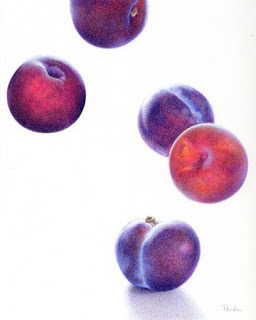 Plums Up
Plums Up
Recently Paula began a series she calls "Un-Still Lifes." Fascinated, the lobster and the canary asked some questions about this captivating exploration of weightlessness and fancy.
L & C: What was the initial inspiration for this series?
Paula: "I had some lovely figs I wanted to draw. I fiddled with them, trying to set up an interesting still life. I had taken several photos, but wasn't really inspired by any of them. Then, in a moment of sheer frustration, I just flipped one upside down and thought 'well, why not?'. The rest of the composition fell into place after that. I really didn't have a well thought out idea about making a series, or what to call them, or anything like that. It was just an impulse to do something different.
I guess the first piece in the series is actually Pulling Up Roots, which I did a while ago. At the time, I just wanted to do something with floating food, but the actual idea of an 'un-still life' hadn't come to me yet.
Calling these 'un-still' came to me after the Helium Figs piece was finished, and that's also when I realized I had unwittingly started a new series."
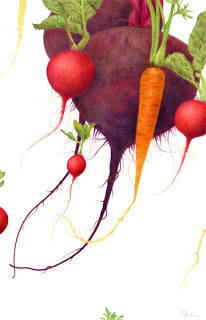
Pulling Up Roots
L & C: Why depart from your other style(s) of work?
P: "Its refreshing to have a new idea that really feels like 'me'. I've done so many nice still lifes of food and other objects that are no different that what a lot of other artists do, and frankly, a little boring. These 'un-still lifes' come from a place in me that gets me excited. I am looking forward to incorporating some architectural elements into them, working larger (and smaller), and just 'going there', if you will."
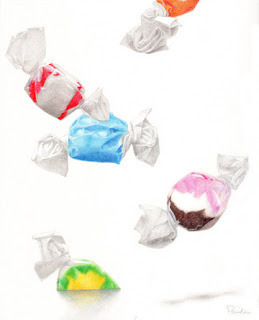
Taffy RainL & C: What is your technique?
P.: "These pieces have all been done with colored pencils on paper. Colored pencils are my favorite medium, so I plan to do more like this. I mix wax and oil based pencils, and work 'dry', without any solvents. I would like to explore using graphite, and maybe watercolors at some point, which are both media that I use for other illustration work."
L & C: Is the audience different for the Un-Still Life pieces?
P.: "These pieces are a continuation of my realistic colored pencil work, but with a twist. They are new, so the audience remains to be seen. I'm guessing it will be people who appreciate classical realistic art, but who also like something just a bit different. As an illustrator, I draw and paint all sorts of subjects (children's picture books, architecture, decorative art, etc.). I expect that the audience for those pictures is quite different than the people who will be attracted to these!"
L & C: Is there anything else you'd like to share?
P.: "Well, there's a funny story about the Plums Up piece. I conceived that as all the plums rising upward. And all the while I was drawing it, in my mind, that's how I saw it. It never occurred to me that the plums could be falling down, because I was so fixed on them floating up! When it was finished, I posted it online and asked for help with a title. People came up with things like Plummeting and other clever titles that referred to the plums falling down. Other people said they knew they were supposed to be floating upward, and one finally suggested Plums Up. So I thought it was interesting that the piece could be viewed in different ways!
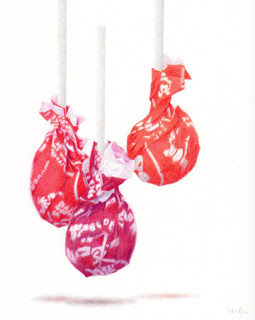 Summer Pops
Summer PopsP: "Thank you so much for having me as a guest on your blog. It's very encouraging to have people respond positively to these new pieces, and I appreciate the support so much."
L & C: Our pleasure! And now you have made us hungry!Daniel A. Rabuzzi is author of the fantasy novel "The Choir Boats," available from ChiZine Publications in September 2009.
"The Choir Boats" explores issues of race, gender, sin, and salvation, and includes a mysterious letter, knuckledogs, carkodrillos, smilax root,
goat stew, and one very fierce golden cat.
(www.danielarabuzzi.com). Daniel blogs at Lobster & Canary about speculative fiction, poetry, history and the arts.
Published on September 09, 2012 18:00



